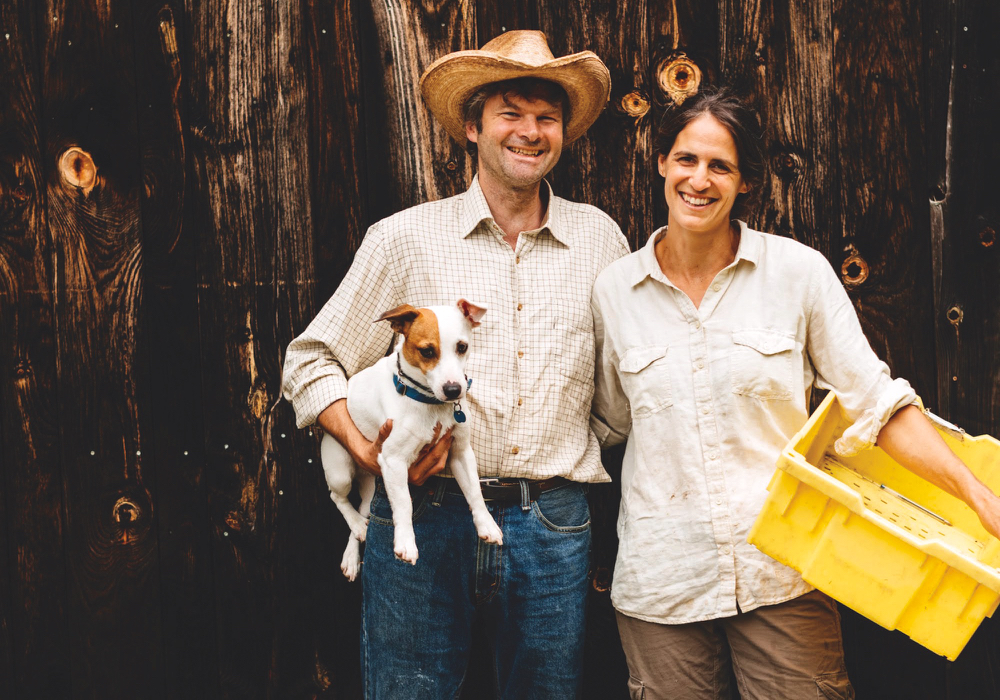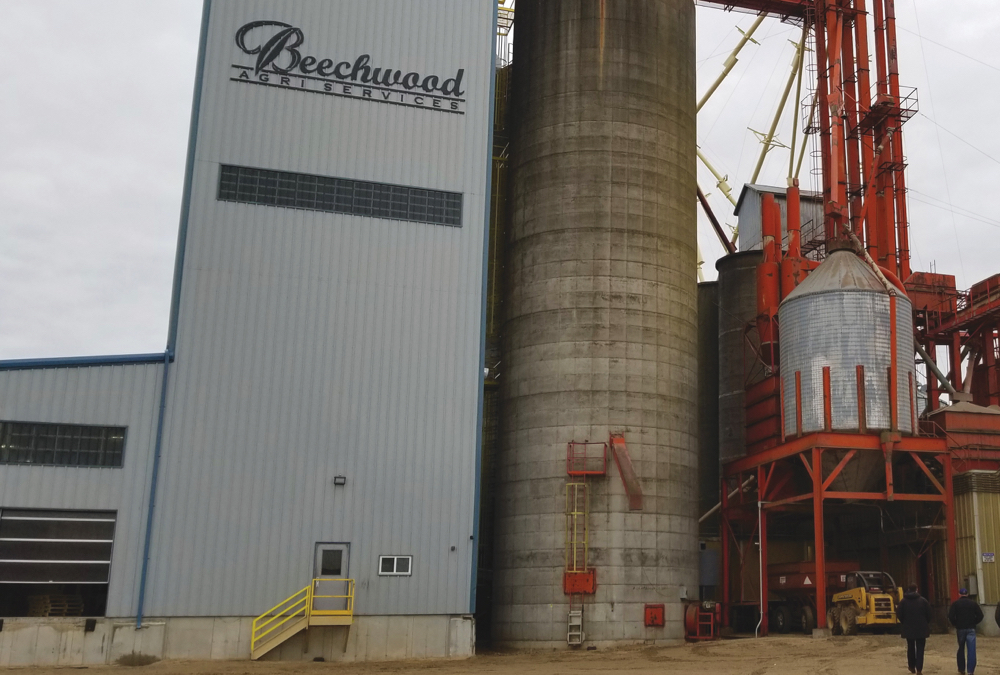So you get Country Guide. Probably you also subscribe to other publications too, on top of the ones that your commodity associations send you. Maybe you get freebie updates from your machinery and chem companies as well, plus all the e-newsletters from marketing analysts, bankers and accountants, not to mention everything you get from the ’net or via social media or your customized phone apps.
The surprise is, few farmers say they feel overwhelmed. Instead, they’re hungry for more.
Russell Jeffrey of FarmShift Inc. recently surveyed the media consumption habits of farmers across the country and found that farmers largely plan to keep consuming more… of everything.
Read Also

Riding the tariff rollercoaster
Farmers are accustomed to roller-coaster years. But the current geopolitical windstorm is something else entirely. On his cattle operation near…
“Today’s farmer is more educated and has more of an appetite for how to do things better than ever before,” Jeffrey says.
It sounds like a great step forward, and it probably is. But knowing how to benefit from that clutter of information is also becoming a crucial skill. At the very least, the job has become so important to your farm that it’s worth investing a few minutes to think more clearly about how well you’re doing at it.
Just ask yourself this, for instance. Are you better at looking for information, or for ideas? Which should you be looking for?
And when you find them, do you prioritize them according to their importance and usefulness, or do you tuck them all away in the same place, where there’s a good chance they’ll never again see the light of day?
Let’s face it. We all need to get better at this, and the best place to start, our experts say, may be to get rid of a lot of the misconceptions that most of us are carrying around.
The changing media world
Farmers are changing the nature of the media that they consume. Sometimes, the changes are fairly straightforward, such as the way that much of what farmers used to get on radio and television has moved to blogs, specialty apps, e-newsletters, and of course YouTube.
Other times it’s more complicated. The shift at Country Guide to dedicate more pages to business issues is an obvious example.
Nor is today’s evolution showing any signs of stopping. Data speeds are still an issue in many rural areas, but technology is providing answers, so we’re seeing more electronic discussion groups, more online how-tos, and just generally more, more, more…
It’s a challenge for ag suppliers too. What’s the best way to talk to farmers about your new tractor or your new herbicide? Do you have to be everywhere, all the time, in order to be sure you’re where you need to be when you need to be there?
Can suppliers afford to be everywhere all the time?
Those are the kinds of questions they ask Jeffrey, as well as wanting to talk to him about farmers’ interest in trade shows, or their desire for one-on-one consultations with company reps.
But then, there’s also that other troubling question. Do farmers only want pieces of information, or are they also looking for ideas?
And if you’re interested in ideas, can you absorb and evaluate them the same way you go about investigating the best timing for your fungicide application, or do you need a different process?
Even with data, it turns out, Jeffrey says that information retention really isn’t anyone’s main objective.
“Farmers are multi-tasking, thinking about where they can get help, what their best sources are, and what’s new or happening,” Jeffrey says. “It’s not so much that they’re going to retain it all, it’s much more about scanning what’s available than really studying and learning something.”
Your two objectives
So where does this leave farmers who are trying to improve both their management and their productivity, and to do it in the most efficient way?
Pascal Thériault, a faculty lecturer at McGill University’s MacDonald campus, is teaching his students what he believes will prove one of the most critical skills they’ll need as young farm managers.
Thériault finds too many of the kids who have come to his classes in the last 10 years are so focused on specifics, they easily lose sight of their farm’s bigger picture.
“I find they have a hard time trying to set long-term goals and a long-term vision,” Thériault says. It’s something he finds himself telling them again and again because, he says, repetition goes hand in hand with retention.
Part of the reason why electronic tactics work, he says, is because the same bits of information often get repeated time and time again. It’s why scanning strategies, where for instance you simply glance at a social media message instead of really sitting down to memorize it, can eventually produce good results.
Farmers who aren’t already absorbing information this way may feel overwhelmed with the amount of information they’re bombarded by. They’re the ones you may hear publicly lamenting how it’s all just too much.
“They don’t have to read everything,” is Thériault’s secret for these individuals. Nor do you have to know everything, because so much information is retrievable on the Internet, or is accessible through your agronomist, mechanic, or other specialist.
Still, the best managers also make time to step back from the technical part of their job and consider how their farm is running from other angles too, Thériault says. They also know that, beyond simple repetition, there are other strategies that actually work on the farm.
Think of learning as a layering process, Thériault suggests. A farmer who attends a seminar on farm transfer and then follows that by reading an article about farm transfer, or vice versa, will actually get more out of both, he says. Even better, they’ll emerge with a clearer sense of what the most important points are.
In part, it’s because of repetition that we talked about, but it’s also because we have different learning pathways. Sometimes we need visuals. Other times we need an opportunity for discussion.
‘Mind management’
Jonathan Creaghan, a business management consultant, says it isn’t time management but really mind management that more farm managers could benefit from. Even a single thought takes time, and if you don’t give the thought the time it needs, you end up being distracted and disconnected, which leaves you wasting even more time.
Whenever possible, Creaghan says, if you hear your phone beep, force yourself to wait until you’re finished with whatever your mind is presently fixed on before you open that new text.
It applies to bigger issues too. “From my experience working with business owners particularly, including farmers, they get distracted by day-to-day minutiae that isn’t relevant to their role and where they want to go,” Creaghan says. “So the first thing you need to be clear on is why you need the information and what you need it for.”
In his book, Thinking Differently about… Getting More Done, Creaghan explains how our brains can operate at three distinct levels. The synopsis below will sort of explain his concepts, but is mainly meant to help you decide whether you want to learn more. That, after all, is the sort of efficient decision-making that this whole column is all about.
The shallowest of Creaghan’s trio is what he calls the Thinking Mind, which tends to operate as a running commentary.
The Thinking Mind personalizes information as it relates to your own values, so it doesn’t just notice that your brother is wearing a hat today but that it’s a hat you either like or don’t like. In other words, it’s a kind of thinking that mixes emotions with facts, which isn’t always a great mix when your goal is high-quality farm management.
“The less time and energy you spend on emotional interpreting, the more likely you are to find the information that you need,” Creaghan says. “Emotion-free decision-making is the recognition of the outcome and the goal that you need from the information itself, so that you don’t get distracted.”
Anyone who has ever lost themselves in a task knows what it’s like for their mind to be operating on a deeper level than what the Thinking Mind tolerates. This deeper level, which Creag-han calls the Working Mind, is the mind of action and is responsible for directing behaviour, reasoned thought, and how best to use intelligence to serve the need of the moment.
This is the mind at work when you get so focused on a job that you lose all track of time or don’t hear when someone is talking right next to you. Now instead of deciding just how ugly your brother’s hat is, your brain is free to notice he’s putting the keys to the farm truck on the counter, which is information that could be critical later that day when you need to go to town.
“Observing without judgment allows you to reconnect to your environment,” Creaghan explains. “As business owners, we need the truth, and the only way you can see the truth is by reconnecting to the information in a more non-judgmental way.”
But learning to think free of emotion and stay focused on the present isn’t easy. Creaghan likes to compare it to doing martial arts for the mind. When mastered, however, clients report understanding their monthly income statement, production reports, or staff reviews much better. “There is no question that as you become more connected to your moment, the better your decision-making is and the higher your performance because the Thinking Mind shuts down.”
The other advantage of shutting down the emotion-laden Thinking Mind is that it encourages more activity in the deepest part of the brain, the Aware Mind. This is where the most efficient kind of thought process happens. When it’s in control, you get what you probably call “gut feelings,” and not only do you lose all track of time, you lose all track of thought process. You hop to conclusions.
We all do it, yet anyone familiar with these hunches also usually knows how difficult it can be to operate on them. Unless there’s a crisis situatio, the Thinking Mind keeps second guessing what the Aware Mind is telling us to do.
It becomes a great feedback loop, and we do get very good at knowing when to trust our instincts, and when to think them through.
But the same happens when we’re information seeking, because we may not pause long enough for the Thinking Mind to ask its questions. This in turn is especially important when we make a snap decision not to read something that we later wish we had. Again, we’ve all done it.
The point is, just knowing about this kind of process can help us manage our way to better information outcomes.
Becoming more in tune with instinctive decision-making can be the key to processing more information than ever, Creaghan says. So if you really want to absorb better information, work harder to stay focused on your immediate environment.
Quest for proof
You’ve done the research but is it statistically significant?
Outstanding farmers have always pushed the envelope trying new things, new ways. Today they measure it and call it R&D. Thanks to GPS-enabled crop production technologies including light-bar navigation, auto steering, variable-rate controllers, and yield monitors, on-farm research is more feasible than ever before.
Precision agriculture technology has allowed for on-farm research on the fly without disrupting the commercial operation. It’s also usually not shared, except with the farm’s buyers and suppliers.
However, true research isn’t only about recording history, it’s about predicting future responses.
Variability in soil, weather, and other stresses makes it difficult to duplicate a test. You can never be 100 per cent certain that the measured yield differences in a trial are solely due to the variable being evaluated, which is why statistical analysis comes into play. This analysis plus sound research design means the results are valid.
In the U.S., on-farm research networks have popped up in several states and some are nationally run programs. For these networks, university or government scientists do the statistical analysis. It looks like a growth trend, says T. Scott Murrell, director of the International Plant Nutrition Institute in his paper, On-Farm Trials and Statistics. “In the future, freely available statistical tools may help transition farmers and agricultural industry professionals to conduct more sophisticated analyses such as multi-site, multi-year studies and, rate studies.”
SR&ED reminder
Canada’s Scientific Research & Experimental Development program gives tax credits to businesses that invest in research. Administered by the Canada Revenue Agency, the SR&ED program provides more than $3 billion in tax incentives to over 20,000 claimants annually.
You could be eligible for tax credit if you’re developing a new product or process, improving an existing product or process, or reducing the environmental impact of your farm.
Generally, a Canadian-controlled private corporation (CCPC) can earn an investment tax credit (ITC) of 35 per cent up to the first $3 million of qualified expenditures for SR&ED carried out in Canada, and 20 per cent on any excess amount.
Other Canadian corporations, proprietorships, partnerships, and trusts can earn an ITC of 20 per cent of qualified expenditures for SR&ED carried out in Canada.
“Uptake for the SR&ED program has been in the billions of dollars,” says Mike McCreight, SR&ED partner for BDO. However, his company only processes 30 to 40 for agriculture, mostly larger farms.
To make it worthwhile for BDO to do the paperwork, he says you need at least a $20,000 credit which means you’d spend $40,000 to $50,000 in expenditures directly attributed to the research.
Although open to all sizes and types of businesses, the project must meet the criteria. The research and development process normally must include some or all of the following: projects or programs, new products, improving production methods or processes, improving a commodity, technology advancement, and productivity improvement.
















